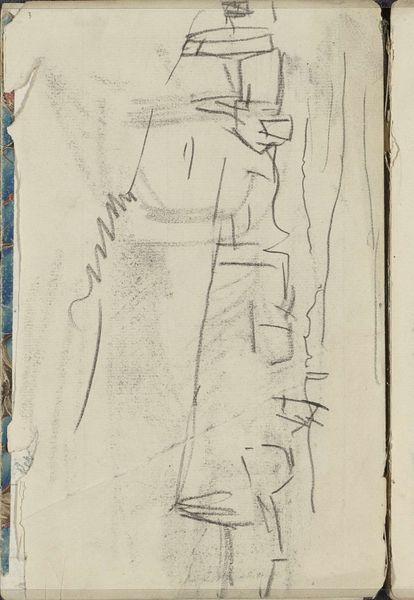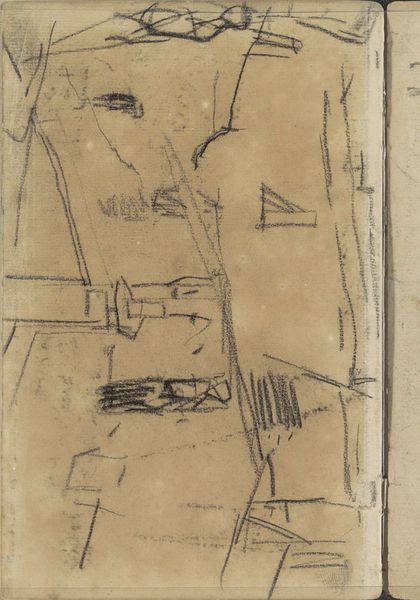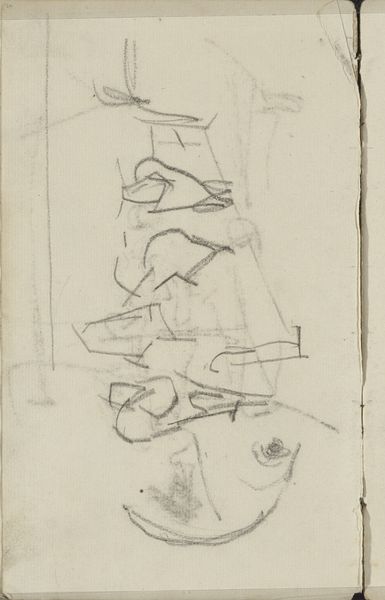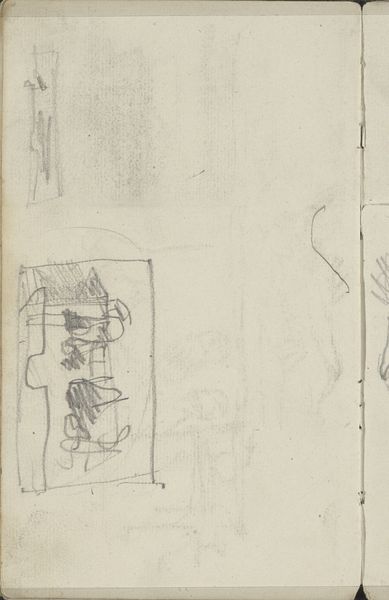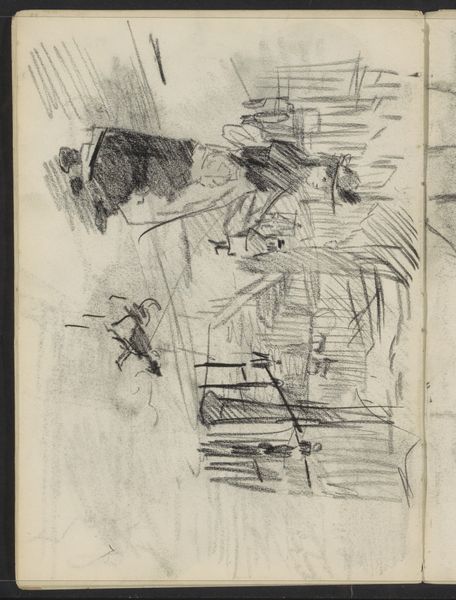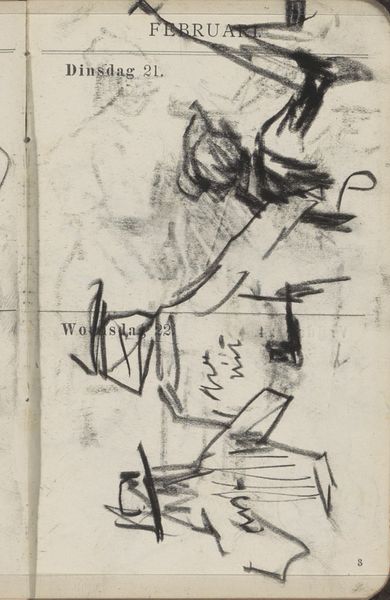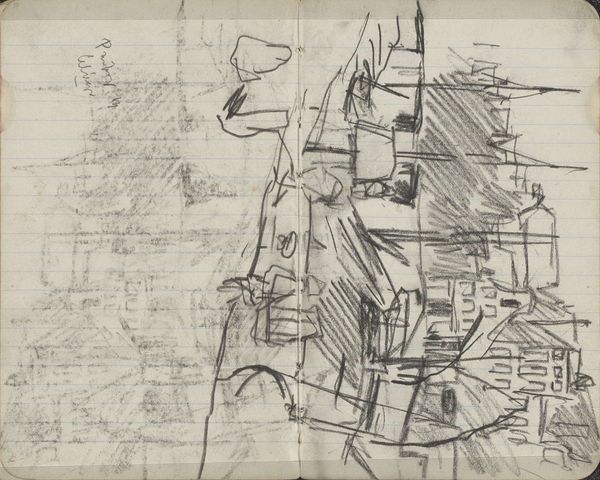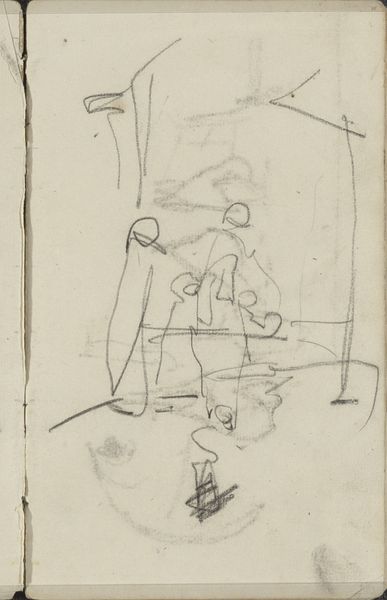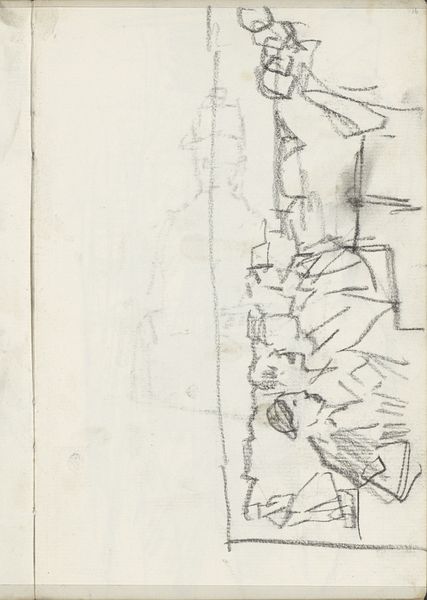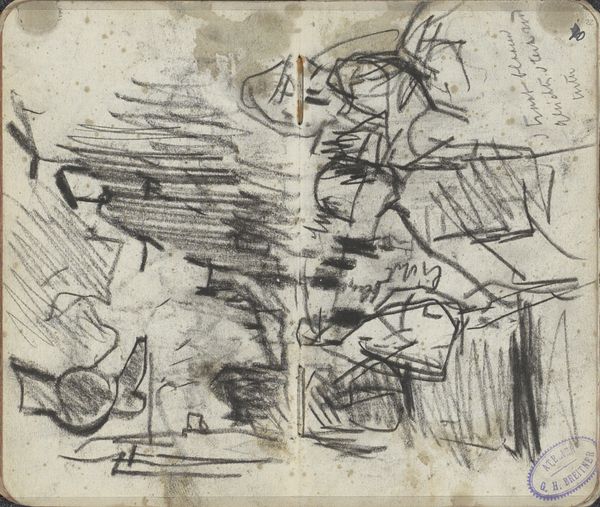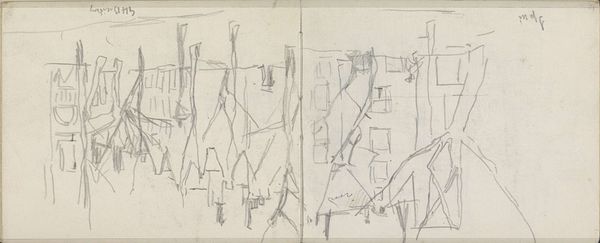
drawing, pencil
#
portrait
#
drawing
#
amateur sketch
#
quirky sketch
#
impressionism
#
incomplete sketchy
#
personal sketchbook
#
idea generation sketch
#
child
#
sketchwork
#
pen-ink sketch
#
pencil
#
sketchbook drawing
#
genre-painting
#
sketchbook art
#
initial sketch
Copyright: Rijks Museum: Open Domain
Curator: This pencil drawing by George Hendrik Breitner, "Twee vrouwen met een kind tussen hen in," dates to the 1880s and is held at the Rijksmuseum. What strikes you initially about it? Editor: Rawness. It’s almost aggressively unpolished. I'm immediately drawn to the implied narratives around labour, class, and the intimate struggles of working women during that era. Curator: The sketch indeed vibrates with a kind of unvarnished truth. The sketchy lines evoke an almost urgent sense of immediacy and it presents archetypal images of the Madonna figure, here reflected as earthly carers in mundane scenarios. The incomplete sketchy impression reminds us of preliminary and ephemeral image making. Editor: Yes, and consider the two women's placement—are they collaborators, relatives, or strangers briefly united by the presence of the child? There is an air of shared responsibility, and resilience that transcends time, connecting to broader narratives about marginalised communities supporting each other. How does this intersect with Breitner's position as a privileged male artist? Curator: I see the work as Breitner attempting to record impressions truthfully from modern everyday life, while engaging with symbolic visual traditions such as depictions of maternity as images of solace and protection. However, these two themes appear uneasily balanced. He’s known for documenting working-class Amsterdam, although his own background was very different. He acts almost as a kind of flâneur capturing these moments, both detached yet involved in the symbolism that unfolds before his eyes. Editor: Detachment can, perhaps inadvertently, contribute to an objectification, furthering a divide. This drawing highlights the value in recognising those unspoken burdens. The sketchiness itself, perhaps reflects that transience, and by extension a possible instability, vulnerability. We might ask: does Breitner fully appreciate the depths of the world he’s depicting? Curator: Well, to its credit, this unfinished work refuses to deliver simple conclusions, instead suggesting that any meaning requires effortful discovery. A single glance is inadequate, further reflection is mandatory. It’s this open-ended invitation, rather than its objective 'accuracy', that determines its evocative power. Editor: Agreed. Ultimately, what lingers for me is how the seemingly incomplete nature of this sketch serves as an important document, opening up space for considering the social complexities embedded within representations of motherhood and community support.
Comments
No comments
Be the first to comment and join the conversation on the ultimate creative platform.

